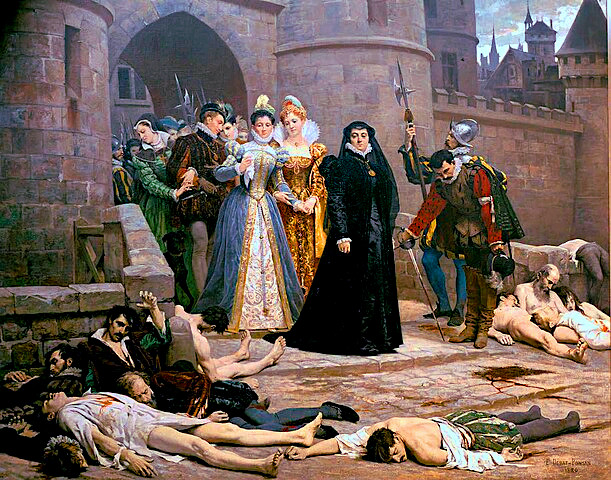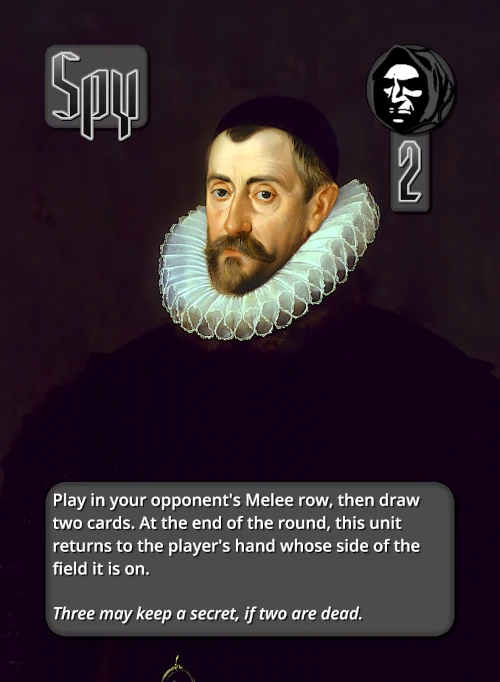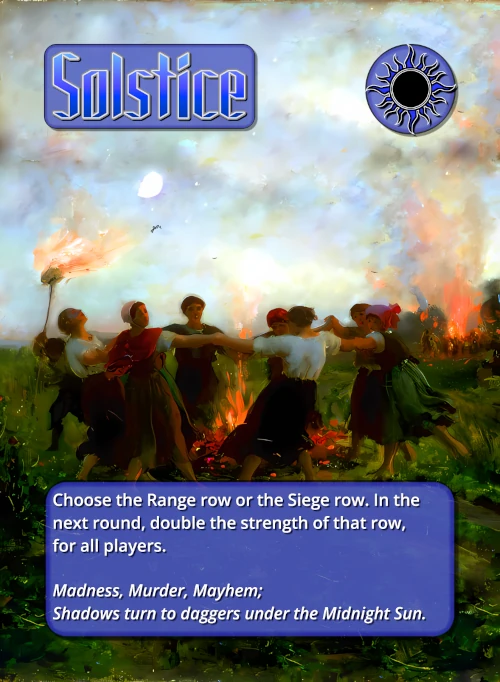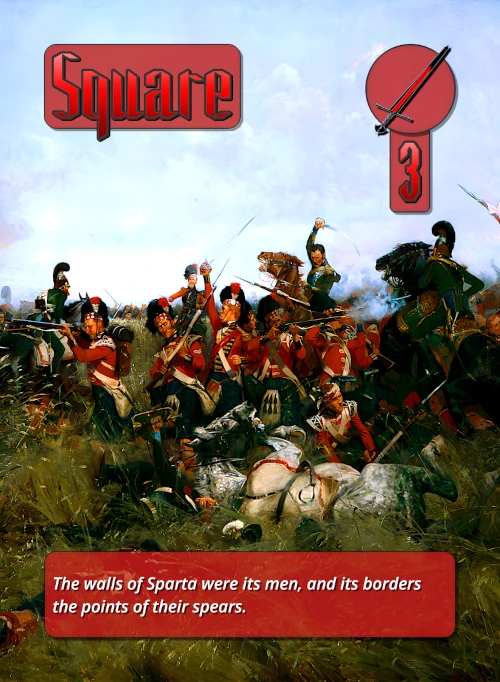Strength: 2
Type: Spy Power
Effect Text: Play in your opponent's Melee row, then draw two cards. At the end of the round, this unit returns to the player's hand whose side of the field it is on.
Flavor Text: Three may keep a secret, if two are dead.
Flavor Source: Benjamin Franklin
Artwork: Sir Francis Walsingham by John De Critz the Elder (1585)
Strategy:
Spies are a powerful way to stall and obtain card draw, effectively giving you more turns than your opponent; however, your opponent will pick up the spy at the end of the round to use against you. To minimize your opponent’s opportunity for card draw, try to use other power cards to pick up the spy directly from the playing field, send the spy to the graveyard, swap the spy back to your side of the field (so it returns to your hand at the end of the round), or play your spy in the final round of the game. Similar to other spies, Spy comes with the risk of creating adjacency for your opponent, so it is safer to play after your opponent has passed.
About the card:
Sir Francis Walsingham was a prominent English statesman and spymaster during the reign of Queen Elizabeth I. He served as her principal secretary from 1573 to 1590 and was instrumental in foiling several plots against her, including the Throckmorton Plot and the Babington Plot. These plots were attempts by Catholic Spain to replace the Protestant Queen Elizabeth with her Catholic half sister Mary Queen of Scots through a planned invasion of England. Walsingham had seen the St. Bartholomew's Day Massacre of the Huguenots (pictured below) as a younger man and this greatly shaped his view of Catholics as extremely violent and untrustworthy (see also Sun King or Traitor King). He would do everything in his power, including spying on and torturing suspected Catholic priests, in order to avoid similar religious strife in England.

After the plot was discovered, Walsingham pushed Elizabeth to execute Mary. Mary during her trial famously said: "All of this is the work of Monsieur de Walsingham for my destruction." Mary was beheaded in the following months, apparently against the wishes of the Queen. After the execution, Walsingham used his spy network to discover the details of the planned Spanish Invasion (see also Armada).






